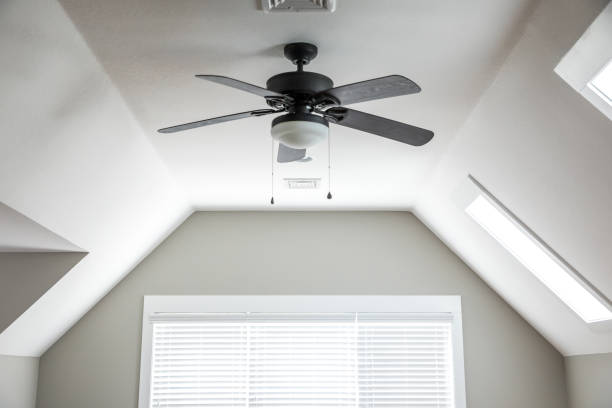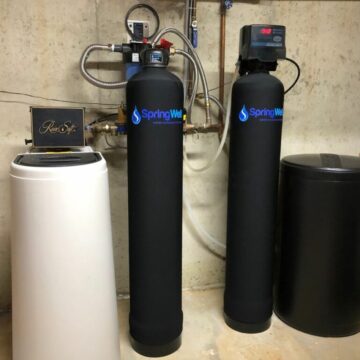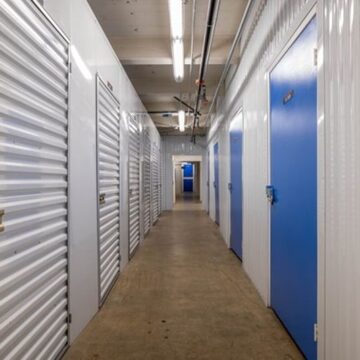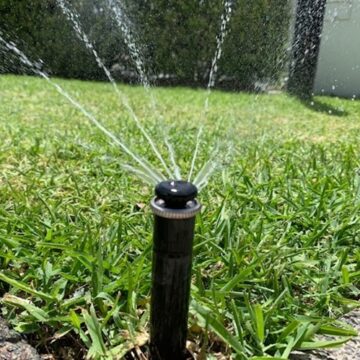A ceiling fan is a mechanical fan mounted on the ceiling of a room, typically suspended by a downrod, that circulates air in a room to provide cooling or heating. Ceiling fans come in a variety of sizes, styles, and colors and can be used to complement the décor of a room.
There are two types of ceiling fans: those with lights and those without lights. Fans with lights often have a fixture mounted on the center of the fan that provides additional illumination to the room.
What are the Benefits of Owning a Ceiling Fan?
There are several benefits of owning a ceiling fan, including:
- Energy savings: Ceiling fans can help reduce your energy costs by allowing you to raise or lower your thermostat setting.
- Improved comfort: Ceiling fans can provide improved comfort by circulating air in the room, which can help make the space feel cooler in the summer and warmer in the winter.
- Aesthetics: Ceiling fans can add to the decor of a room and come in a variety of styles, colors, and materials to match any decor.
- Increased airflow: Ceiling fans can increase airflow in a room, which can help to improve indoor air quality and reduce the buildup of allergens.
- Reduced noise: Many ceiling fans are designed to operate quietly, which can help to create a more peaceful and relaxing atmosphere in a room.
- Versatility: Ceiling fans can be used in a variety of spaces, including bedrooms, living rooms, and outdoor areas, making them a versatile addition to any home.
How Can You Get the Most Efficiency Out of Your New Fan?
To get the most efficiency out of your new ceiling fan, you can follow these tips:
- Use the fan in conjunction with your air conditioning or heating system: Ceiling fans can help circulate air in a room, making it feel more comfortable and reducing the need for your air conditioning or heating system to work as hard.
- Change the direction of the fan: Ceiling fans have a reversible motor that allows you to change the direction of the fan’s rotation. During the summer, the fan should rotate counterclockwise to help create a cooling breeze, while during the winter, it should rotate clockwise to help distribute warm air.
- Clean the fan regularly: Dust and debris can accumulate on the blades of a ceiling fan, reducing its efficiency. Clean the fan regularly to ensure it is running at peak performance.
- Use the fan at the right speed: Ceiling fans have different speed settings, so choose the speed that is most appropriate for your needs. Using the fan at the right speed can help reduce energy consumption and improve efficiency.
- Install the fan at the right height: The fan should be installed at a height of at least 7 feet above the floor to ensure maximum efficiency.
- Use energy-efficient bulbs: If your ceiling fan has a light fixture, consider using energy-efficient bulbs, such as LED or CFL bulbs, to reduce energy consumption.
By following these tips, you can get the most efficiency out of your new ceiling fan and enjoy improved air circulation and comfort in your home.
How to Purchase the Best Ceiling Fan for Your Needs?
When purchasing a ceiling fan, it’s important to consider several factors to ensure you get the best one for your needs. Here are some steps to follow:
- Determine the size of the room: Ceiling fans come in different sizes and the size of the room will determine the size of the fan you need. A good rule of thumb is to choose a fan that has blades that span about 60-72 inches for a room that’s 144 square feet or larger.
- Consider the height of the ceiling: The height of the ceiling will determine the length of the downrod you need. You’ll want to make sure the blades of the fan are at least 7-9 feet off the ground.
- Choose a style and finish: Ceiling fans come in a variety of styles and finishes to match any decor. Consider the style and finish of the other elements in the room, such as the light fixtures, furniture, and flooring, to ensure you choose a fan that complements the space.
- Decide on the type of control: Ceiling fans come with various types of controls, including pull chains, wall switches, and remote controls. Decide which type of control you prefer and consider if you need the fan to be compatible with a smart home system.
- Look for energy efficiency: Consider purchasing a fan with a high CFM (cubic feet per minute) rating and an Energy Star certification to ensure you get a fan that’s energy efficient and cost-effective.
- Check the warranty: Look for a fan with a warranty that covers both the motor and the blades, and check the length of the warranty to ensure you have adequate protection.
- Read reviews: Read customer reviews to see what others have to say about the performance and reliability of the fans you’re considering. This can help you make an informed decision and choose a fan that will meet your needs.
















